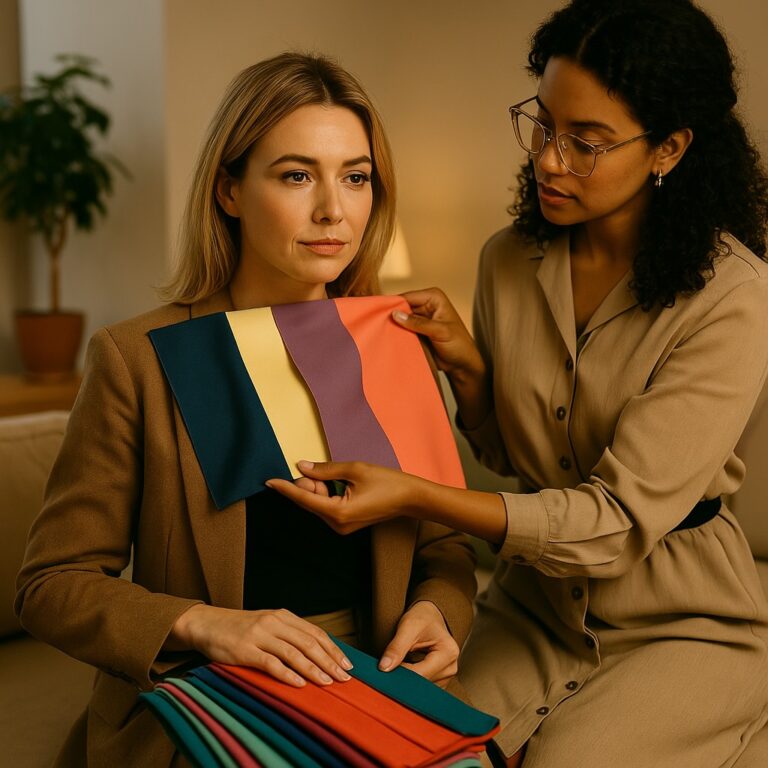This question involves much more than simply picking out clothes that are trendy or that others deem fashionable. It’s a complex, ever-evolving process that blurs the lines between self-expression and societal norms, reflecting your identity, lifestyle, and even aspirations. Think of personal style as a visual narrative of who you are and who you aspire to be. It serves not only as a mode of expression but also as a form of communication, sending subtle messages about your personality and your approach to life.
At the core, developing a personal style starts with self-awareness and observation. It involves understanding your body’s architecture and how clothes can enhance or diminish your features. Recognizing the importance of such realizations is the first step in the journey of combining your clothes with style. This initial step will empower you to make choices that are not just aesthetically pleasing but also deeply aligned with your personal comfort and confidence. A stylish outfit isn’t just about the pieces you wear but how you wear them and what they mean to you and to others.
Furthermore, cultivating a personal style requires staying true to yourself while still adapting to changes in your life and shifts in fashion trends. It is about balancing consistency with adaptability, maintaining the essence of what defines your unique style while also embracing evolution and change. Implementing these foundational concepts might seem difficult, but the essence lies in exploring and experimenting without fear.
Essentially, tips to dress well are infinite and can vary widely, but they all go back to one fundamental idea: wear what feels right and looks good on you, not just what’s in the magazines. Your style is your personal brand, a symbol of your individuality and uniqueness. So, it’s crucial to invest time in understanding it, refining it, and proudly owning it. Remember, the goal is not just to look good but to feel deeply connected with how you present yourself to the world.
How do I combine and assemble the perfect style without losing myself in the process?
Mastering the art of assembling a stylish outfit requires an understanding of several key components that, when combined with flair and personal taste, ensure you always step out looking your best. Firstly, it’s crucial to select garments that complement your body type. This includes understanding which silhouettes flatter your shape. The foundation of dressing well involves pairing items wisely using color analysis that balance and enhance your natural proportions.
Fabric choice is the next critical element: Materials convey the level of formality and the feel of an outfit. Rich, natural fabrics like wool and silk raise the sophistication, while cotton and linen are perfect for more casual, relaxed looks. The right fabric not only elevates style but is also essential for comfort and functionality.
Tailoring can make or break your ensemble: Clothes that fit perfectly around the shoulders, waist, and legs can transform an average outfit into a standout piece. Tailoring doesn’t always mean extensive alterations; it can be as simple as hemming pants to the right length or tapering a shirt to reduce excess fabric.
Choosing the right colors and patterns: Choosing colors and patterns for your personal style is fundamental in creating stylish outfits that reflect your personality and boost your confidence. It’s important to consider color analysis theory, understanding which colors complement your skin tone and hair color can boost your entire look. Using AI technology with applications like Color Analysis AI – Dressika app will provide you with the right advice based on the science of color analysis. Begin by identifying whether you have a warm, cool, or neutral undertone to your skin. Warm undertones are flattered by earthy colors like red, peach, coral, orange, amber, gold, and yellow. Cool undertones shine in blue, green, purple, and turquoise. Neutral undertones? You get the best of both worlds and can mix colors from either spectrum.
What about patterns?: play just as crucial a role in defining your style. To integrate patterns into your wardrobe effectively, start with the scale of the pattern. Smaller, finer patterns tend to look more subtle and are excellent for more formal settings, whereas bolder, larger patterns often make a more dramatic statement and suit casual or creative environments. Balancing patterned pieces with solid ones is key to not overwhelming your look. For example, if you wear a floral print shirt, pair it with a solid-colored skirt or trousers that highlight one of the shirt’s less dominant colors.
Accessoires: Accessorizing is an art form that can transform any outfit from ordinary to standout by merely adding or altering a few key pieces. Understanding how to select accessories that complement rather than overshadow your ensemble is crucial. Start with scale and proportion, larger accessories work well with simpler, more streamlined outfits, while more detailed clothes may call for subtle accents. Consider the message you want to send. For instance, a bold, oversized watch might speak to your confidence and cutting-edge aesthetic, whereas delicate jewelry can suggest subtlety and sophistication.
The art of mixing and matching separates the stylish from the merely dressed
To master this skill and truly combine your clothes with style, requires a deep understanding of your personal aesthetic along with some strategic choices. Here’s a more detailed look into advanced techniques for creating stylish combinations that make your outfits pop and resonate with your personal sense of fashion:
- Start with a Neutral Base: Begin by selecting neutral items as your base pieces—think black trousers, white shirts, gray skirts. These act as the canvas for adding layers or splashes of color, making them essential for any wardrobe looking to achieve flexibility in styling.
- Add an Unexpected Element: To elevate an outfit, introduce an unexpected item, maybe a bold print or a bright accessory. This creates a focal point and adds an element of surprise, instantly enhancing the overall look.
- Play with Textures: Combining different textures can add depth to your ensemble. Pair smooth, glossy fabrics like silk with rough-textured materials like tweed or wool. This contrast not only is visually appealing but also tactilely engaging, providing an outfit with a more dynamic feel.
- Balance Proportions: Successful mixing and matching often boils down to balancing proportions. If you’re wearing a loose top, balance it with tighter bottoms, and vice versa. This keeps the outfit from overwhelming your frame and helps to draw the eye across your entire look.
- Color Blocking: Employ color blocking by using solid blocks of different colors to create a bold and visually striking outfit. This technique allows for colorful creativity while maintaining a chic and coherent look. Color analysis – Dressika app will help you achieve the results you need by advising you which colors suit you better considering your skin tone and hair color.
- Layer Thoughtfully: Layering isn’t just for warmth; it’s a strategic style choice. Use layers to add complexity or to introduce new colors and patterns subtly. Each layer should contribute to the overall aesthetic, not distract from it.
Combining your clothes with style goes beyond just matching colors; it involves a deep understanding of fashion insights and personal creativity. With these tips to dress well and Color Analysis – Dressika app and its in-built AI color analysis technology, you’re not just putting on clothes, you’re crafting statements and expressing individuality. Each choice, each combination, tells part of your story. Embrace these advanced techniques to enhance your wardrobe and create outfits that not only look cohesive but feel inherently you.











